 The Swiss firm of Bolliger & Mabillard had developed a sterling reputation for innovative, smooth, and reliable coasters during the 1990's, and in the coaster war, they were called on by parks to keep coming up with "the next big thing". For 1999 the new feature they designed was the concept of the "floorless" coaster, and Six Flags added the very first of these ever built at Great Adventure, adding it as part of the park's "War On Lines". |

 |
 |
 |
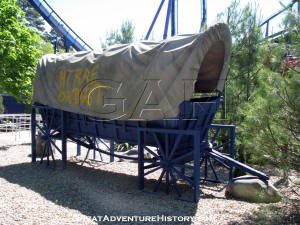 |
For 2009 Medusa
received a huge makeover becoming Bizarro, the park's first villain
themed attraction. Bizarro is Superman's nemesis who comes from a
backwards world where things are a little unusual. The familiar Medusa Mining Company theme elements took on the off-kilter appearance of Bizarro's World, complete with comic book style story panels along the queue explaining the story of Bizarro. |
 |
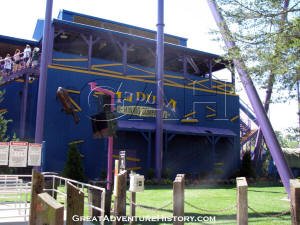 |
 |
|
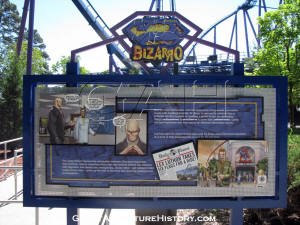 |
 |
 |
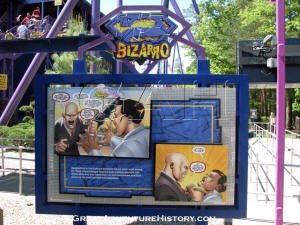 |
 |
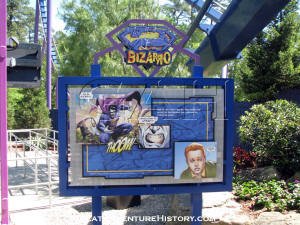 |
 |
 |
 |
 |
The Bizarro makeover
touched on every part of the great coaster, making it even better.
The tracks received fresh paint in vibrant blue and purple, and the
Medusa entrance sign was replaced with an elaborate Bizarro portal. The trains received the biggest makeover of all with the installation of an on-board sound system. As part of that system, the two center seats of the last row of each train were removed to accommodate the battery pack and electronics. The speakers provided a new soundtrack featuring music, sound effects, and narration which furthered the story of Bizarro and was timed to fit the elements of the ride.     The ten year old Medusa was updated and attracted a whole new audience. The clever makeover made the ride fresh and exciting again, with great details in the new theme elements and a new layer of story telling that the coaster had lacked. |
 |
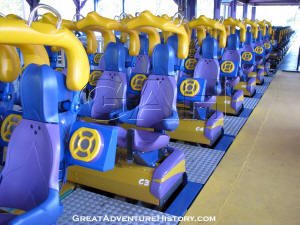 |
 |
|
 |
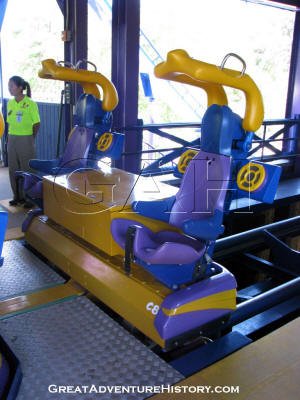 |
|
 |
 |
|
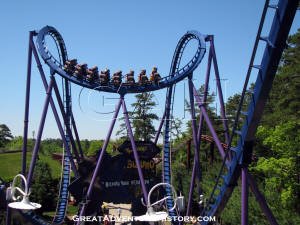 |
 |
|
 |
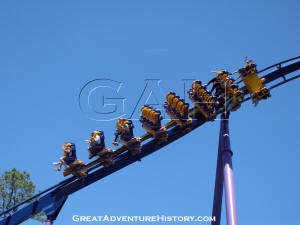 |
|
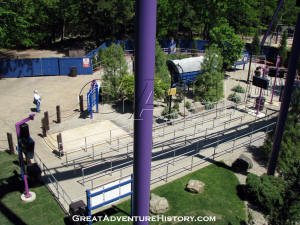 |
 |
|
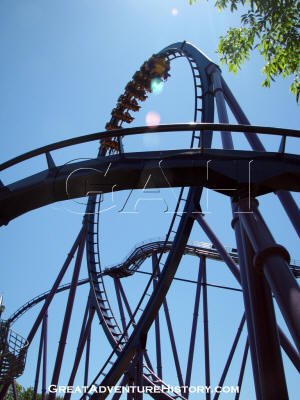 |
 |
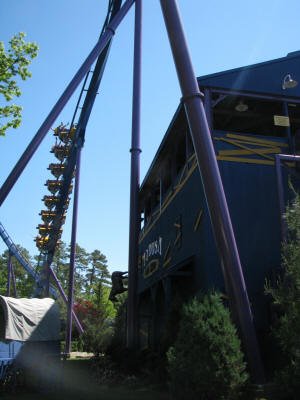 |
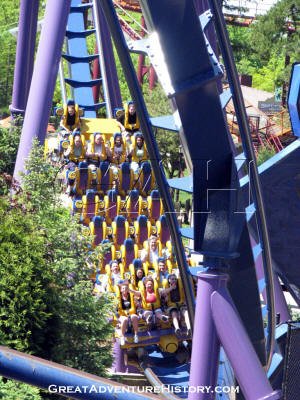 |
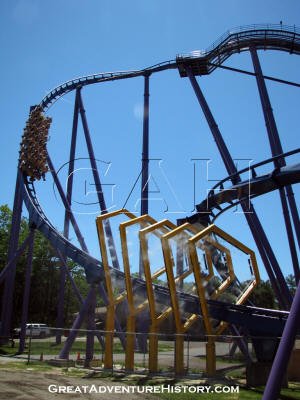 |
 |
 |
Along the course of the ride new features were added to bring more
sensations and experiences. The first of the new elements was a
series of Superman shields at the bottom of the first drop. The
shields added a new "head chopper" effect to the ride. As part of the series of shields, a fog of cooling mist was pumped in, enveloping riders as they plunged at top speed through the drop and into the vertical loop. The shields also featured LEDs which changed colors and added a new element after dark, lighting the mist. The cool mist was the first of the extremes in sensory experiences, which was quickly followed by the extreme heat of fire. |
 |
 |
 |
|
 |
 |
|
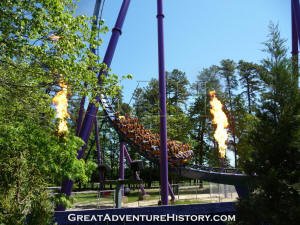 |
 |
 |
 |
 |
 |
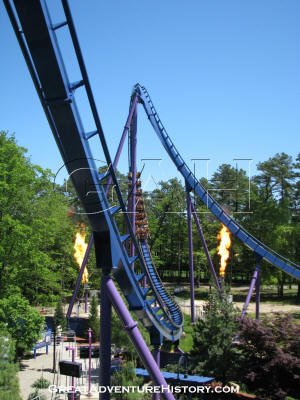 |
The most visible and exciting new
element of Bizarro was the fire effect at the base of the Immelman
element. Twin gas jets produced large fire balls on either side of the train, producing intense heat and the amazing visual of columns of fire coming toward the riders. The gas jets were triggered by sensors located along the track, and the system featured a wind monitor which would turn the effect off in strong winds. |
 |
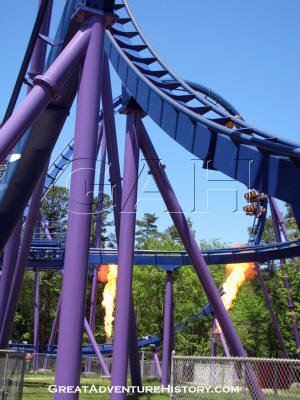 |
 |
 |
 |
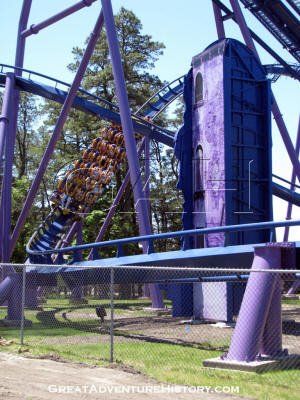 |
 |
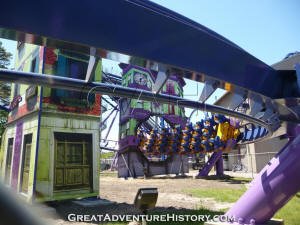 |
Just after the mid
course brake run, the coaster's carousel turn featured the facades of
some of the most unusual buildings from Bizarro World, with the train
passing close to and then through the buildings.  |
 |
 |
 |
|
 |
 |
|
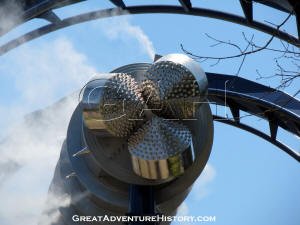 |
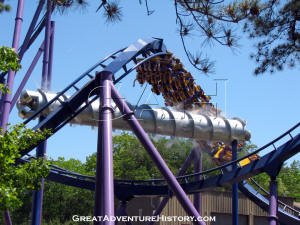 |
 |
 |
The final new feature
of the ride is the "auger of doom", a piece of mining equipment complete
with drill heads and spikes and emitting steam. The auger was suspended in the center of the helices, with the train passing around the auger twice. The illusion of passing dangerously close to the auger added a new dimension of danger and thrills to the ride. As the trains returned to the station the soundtrack played a techno beat with a chant of "Bizarro 1, Bizarro 1". |
 |
 |
 |
|
 |
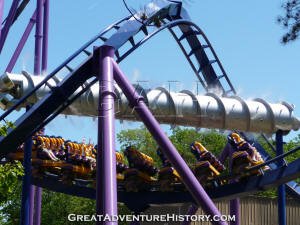 |
 |
 |
 |
 |